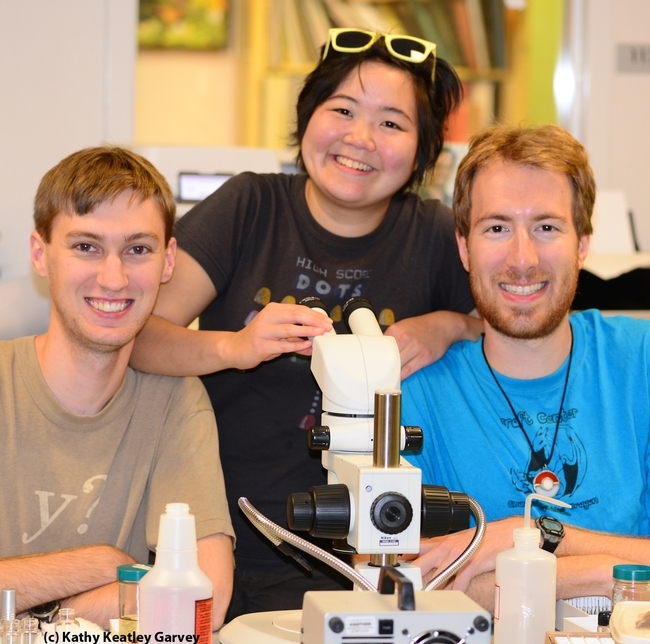If you like Pokémon, you know the insect connection.
Satoshi Tajiri of Japan, who developed Pokémon, collected insects in his childhood and initially toyed with the idea of becoming an entomologist.
He never forgot his love of insects and showcased them in Nintendo's Pokémon, now the world's second most successful video game-based media franchise, eclipsed only by Nintendo's Mario.
Enter three young entomologists at the Bohart Museum of Entomology, University of California, Davis. What they did is amazing.
They published a humorous take on the evolutionary development and history of the 646 fictional species depicted in the Pokémon media over the last 16 years.
“We made a very real phylogeny of the very fake Pokémon creatures,” commented lead author Matan Shelomi, the UC Davis entomology graduate student who conceived the idea.
The article, “A Phylogeny and Evolutionary History of the Pokémon,” appeared in the Annals of Improbable Research (AIR), a tongue-in-cheek journal meant “to make people laugh and then think,” according to the editors. In keeping with the “laugh-and-then-think” concept, the journal also awards the infamous IG Nobel Prizes.
Shelomi, a graduate of Harvard where the IG Nobel Prizes are awarded, said he based his idea “in part on other AIR papers like the phylogeny of Chia Pets and the taxonomic description of Barney the Dinosaur.”
Until now, however, no one has traced the evolutionary history of the 646 fictional species, let alone develop a 16-generation phylogenetic or evolutionary tree.
The Pokémon project is the work of Shelomi; Andrew Richards, a junior specialist at the Bohart Museum; and Ivana Li, an entomology student/artist who works part-time at the Bohart.
Oh, wait! There's a fourth author, too--Yukinari Okido, whom Pokémon fans may recognize as the Japanese name of one of the fictional Pokémon professors from the game/TV show, Professor Oak.
How did it all come about? “I had a lull in my dissertation research and decided to spend the weekends and downtime making this phylogeny,” said Shelomi, who is studying for his doctorate in entomology with Lynn Kimsey, director of the Bohart Museum and professor of entomology at UC Davis. “It took at least a month to actually collect all the data, which I did manually by scrolling through Pokémon websites.”
What about reader reaction? “The paper is slowly making the rounds,” Shelomi said. “We've had quite a few people disagree with the tree, as some of the conclusions violate Pokémon canon, and we do have the usual phylogenetic problems of long-branch attraction, etc. The disconnect between the tree and Pokémon mating groups is a problem, but I argue that the Biological Species Concept should not be assumed for Pokémon and I stand by my tree.”
“So far, one scientist--a linguist in Japan--has asked for a copy of the dataset to use in a class on phylogram building," Shelomi said, "and he apparently came up with a different tree.”
“It would be nice to see a wide set of articles responding to this one,” Shelomi said. “I think it would be quite easy to fill a journal of Pokémon science, although much harder to justify creating one.”
Want to see the phylogeny? Click on the link or see it at the Bohart Museum, 1124 Academic Surge, Crocker Lane, UC Davis.
Attached Images:
